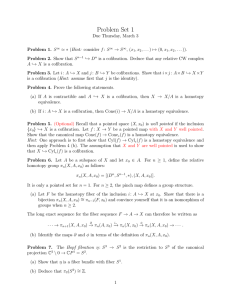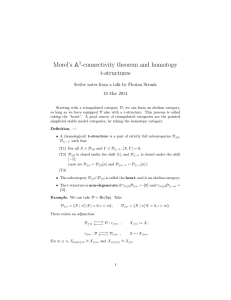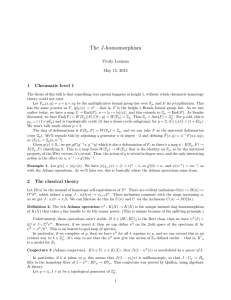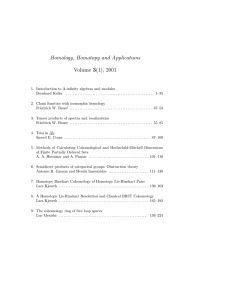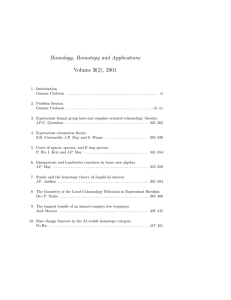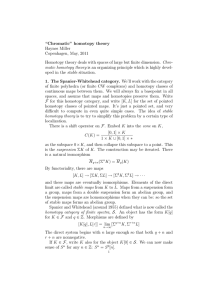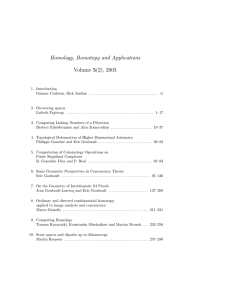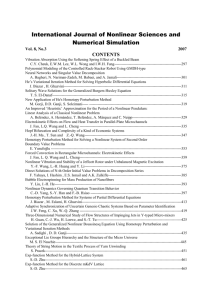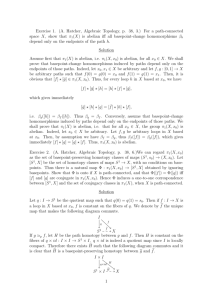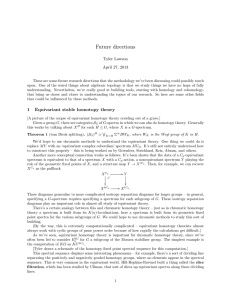Problem Set 2
advertisement
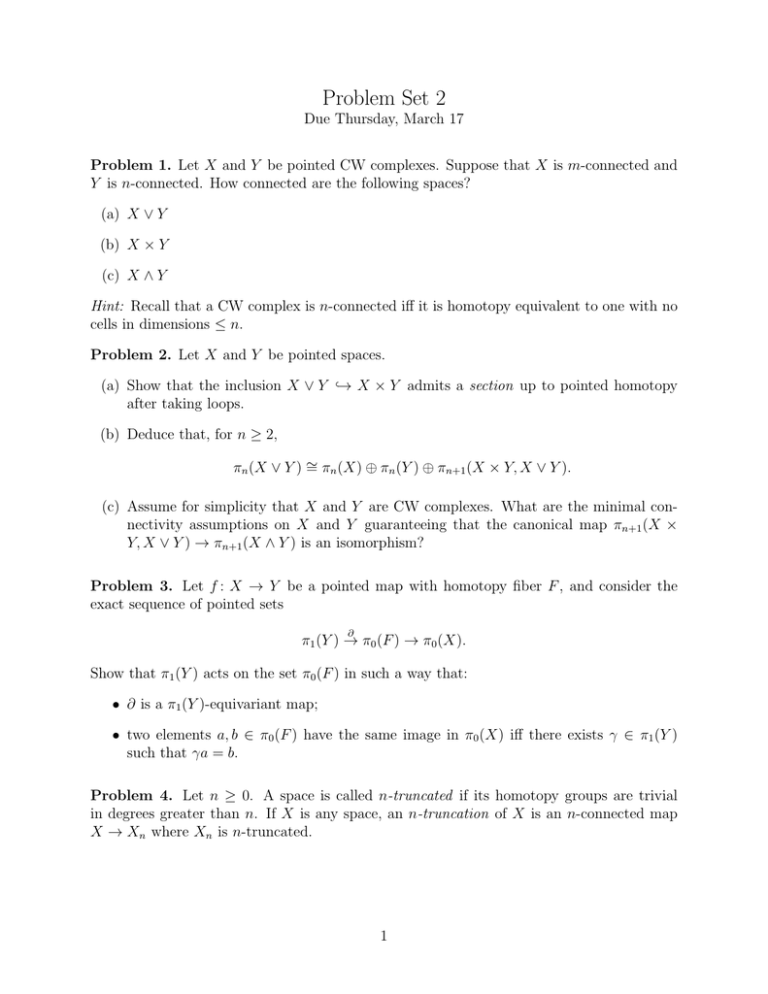
Problem Set 2
Due Thursday, March 17
Problem 1. Let X and Y be pointed CW complexes. Suppose that X is m-connected and
Y is n-connected. How connected are the following spaces?
(a) X ∨ Y
(b) X × Y
(c) X ∧ Y
Hint: Recall that a CW complex is n-connected iff it is homotopy equivalent to one with no
cells in dimensions ≤ n.
Problem 2. Let X and Y be pointed spaces.
(a) Show that the inclusion X ∨ Y ,→ X × Y admits a section up to pointed homotopy
after taking loops.
(b) Deduce that, for n ≥ 2,
πn (X ∨ Y ) ∼
= πn (X) ⊕ πn (Y ) ⊕ πn+1 (X × Y, X ∨ Y ).
(c) Assume for simplicity that X and Y are CW complexes. What are the minimal connectivity assumptions on X and Y guaranteeing that the canonical map πn+1 (X ×
Y, X ∨ Y ) → πn+1 (X ∧ Y ) is an isomorphism?
Problem 3. Let f : X → Y be a pointed map with homotopy fiber F , and consider the
exact sequence of pointed sets
∂
π1 (Y ) → π0 (F ) → π0 (X).
Show that π1 (Y ) acts on the set π0 (F ) in such a way that:
• ∂ is a π1 (Y )-equivariant map;
• two elements a, b ∈ π0 (F ) have the same image in π0 (X) iff there exists γ ∈ π1 (Y )
such that γa = b.
Problem 4. Let n ≥ 0. A space is called n-truncated if its homotopy groups are trivial
in degrees greater than n. If X is any space, an n-truncation of X is an n-connected map
X → Xn where Xn is n-truncated.
1
(a) Let X be a CW complex. Show that there exists a tower
X
···
Xn+1
Xn
Xn−1
···
X0
where each map X → Xn is an n-truncation of X.
Hint: First construct an n-truncation X → Xn by attaching cells of dimensions ≥ n+2.
Then, show that the n-truncation factors through the (n + 1)-truncation.
This is called the Postnikov tower of X; one can show that it is unique in the appropriate
sense. Note that the homotopy fibers of Xn → Xn−1 have no nontrivial homotopy groups
except in degree n (such spaces are called Eilenberg–Mac Lane spaces of degree n, see Problem
5 below).
(b) Show that S 2 = CP 1 ,→ CP ∞ is a 2-truncation of S 2 .
Problem 5. (Eilenberg–Mac Lane spaces) Let n ≥ 1 and let A be a group (abelian if n ≥ 2).
(a) Without using Brown representability, construct a CW complex K(A, n) such that
(
A if i = n,
πi (K(A, n)) ∼
=
0 otherwise,
and show that any two CW complexes with this property are homotopy equivalent.
(b) Optional. Show that [K(A, n), K(B, n)]∗ ∼
= Hom(A, B). In other words, the construction A 7→ K(A, n) is an equivalence of categories between (abelian) groups and the
homotopy category of pointed Eilenberg–Mac Lane spaces of degree n.
Problem 6.
(a) Compute the homotopy groups of RP n and CP n in terms of the homotopy groups of
spheres.
(b) Let n ≥ 2. Compute the relative homotopy group πn (RP n , RP n−1 ) and observe that
the canonical map πn (RP n , RP n−1 ) → πn (RP n /RP n−1 ) is not an isomorphism.
Problem 7. (Whitehead products) Let p, q ≥ 1. Define h : S p+q−1 → S p ∨ S q by the
commutativity of the following diagram:
∂I p+q
I p+q = I p × I q
I p /∂I p × I q /∂I q
h
I p /∂I p ∨ I q /∂I q .
2
It is not difficult to show that the maps h define a structure of graded Lie coalgebra on the
graded cogroup {S n+1 }n≥0 in the pointed homotopy category. Equivalently, the homotopy
groups π∗+1 (X) of a pointed space X have the structure of a graded Lie algebra, with bracket
[−, −] : πp (X) × πq (X) → πp+q−1 (X) given by:
α∨β
h
∇
[α, β] : S p+q−1 →
− S p ∨ S q −−→ X ∨ X −
→ X.
This bracket is called the Whitehead product.
(a) What is the mapping cone of h?
(b) Describe [−, −] : π1 (X) × πn (X) → πn (X) in terms of the action of π1 (X) on πn (X).
(c) Suppose that X is an H-space, i.e., that the fold map ∇ : X ∨ X → X extends to
a map µ : X × X → X in the pointed homotopy category. Show that all Whitehead
products on π∗+1 (X) are zero.
(d) Show that the suspension map πp+q−1 (X) → πp+q (ΣX) sends all Whitehead products
to zero (Hint: loop spaces are H-spaces).
Problem 8. Prove the homotopy version of the Poincaré conjecture: every simply connected
compact smooth 3-manifold is homotopy equivalent to a 3-sphere. You can use the fact that
any compact smooth manifold is homotopy equivalent to a CW complex.
3
